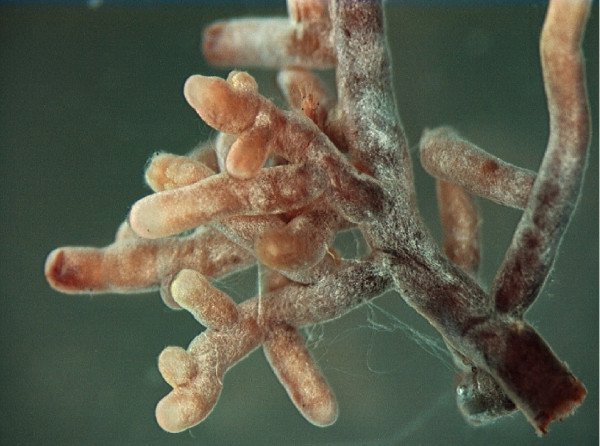Science News
Dirty Microbes
August 22, 2013
by Molly Michelson

As scientists understand more about microbes, it seems that the miniscule life forms have the potential to contribute to a host of useful activities—making biofuels, fighting human disease, improving high tech, you name it!
Now, a feature article in the September issue of Scientific American looks at how soil microbes could revolutionize agriculture.
Soil microbes include everything from bacteria to fungi, and article author Richard Conniff likes to call the lot collectively “the agribiome.” These microscopic life forms have the potential to solve many crises facing agriculture today—everything from climate change and drought to Salmonella and other food-bourn illnesses, from the costs of man-made fertilizers to the GMO controversy.
Conniff’s article comes on the heels two other papers that highlight the importance of soil microbes. In a paper published last week in the Proceedings of the National Academy of Sciences, a team of British scientists emphasizes how important soil microbe diversity is for European crops. And two weeks ago, American researchers determined that soil microbes are responsible for controlling carbon in the soil—an important factor in retaining the important mineral in the dirt as temperatures rise and the climate warms.
The Scientific American article gives many examples of these crucial, unseen microbial workers. Bacteria found in soil on the United States West Coast can kill Salmonella, Conniff reports, so the USDA is looking at introducing the bacteria in East Coast soils to stop the occasionally deadly outbreaks.
And instead of genetically modifying actual crops to withstand drought conditions, Mexican scientists are looking at modifying bacteria to strengthen the plants in the soil at their roots.
Mycorrhizal fungi in the soil are heroes in both the SciAm article and the PNAS study. The fungi deliver much-needed phosphate to crops, an easier and cheaper way to get the important mineral to the plants to help them grow. Artificial fertilizers can be expensive, especially for farmers in developing countries, and harm the natural soil ecosystem. Run-off from these fertilizers also contaminates freshwater and marine environments. A simple animation of how the fungi works to help plants is available here.
(Mycorrhizal fungi also play a heroic role in the next Academy planetarium show! Currently in production and set for a fall 2014 opening date, the latest production from our visualization studio will highlight the complex relationships in ecosystems—and how humans fit into the picture.)
If farmers and scientists can acknowledge that collaborating with microbes can play a crucial role in farming, “we will have come a step closer to feeding a hungry world,” Conniff concludes.
The lead author of the PNAS paper, Franciska de Vries, says, “This research highlights the importance of soil organisms and demonstrates that there is a whole world beneath our feet, inhabited by small creatures that we can’t even see most of the time. By liberating nitrogen for plant growth and locking up carbon in the soil they play an important role in supporting life on Earth.”
Mycorrhizal fungi image: Nilsson et al. BMC Bioinformatics